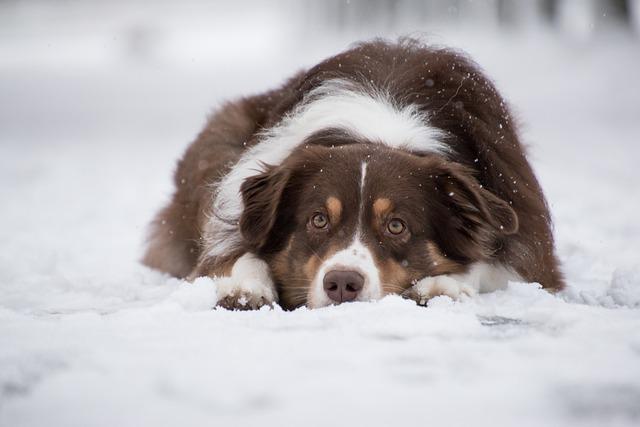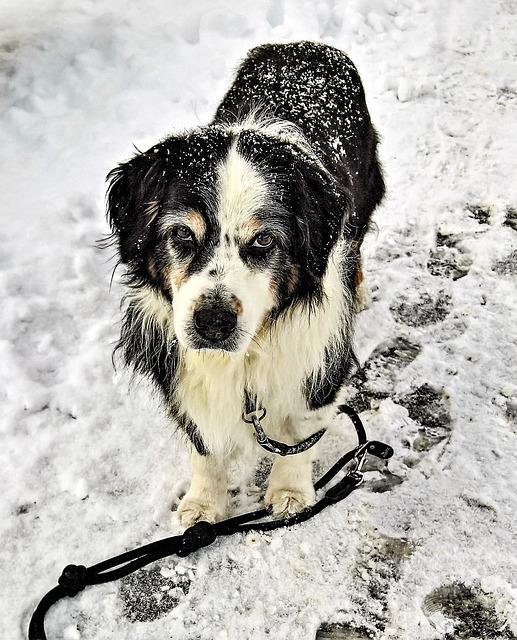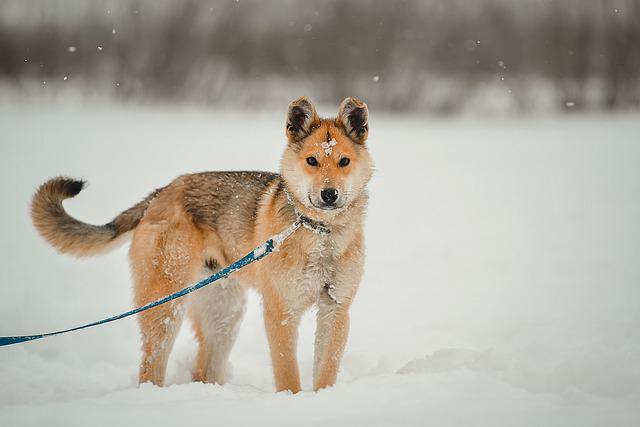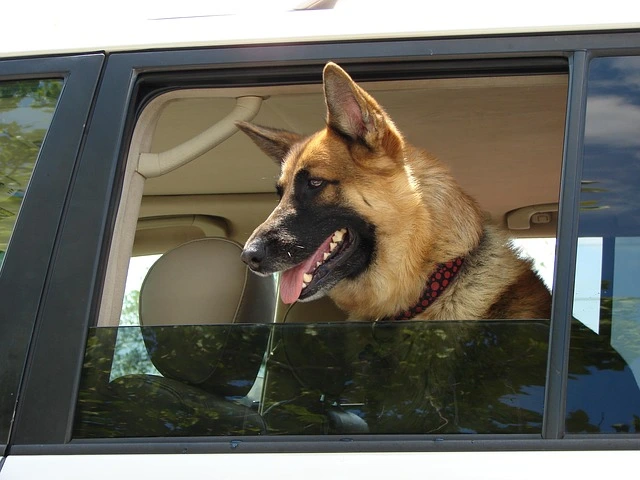30+ Essential and Safety Tips, Walking Dogs in The Snow or Winter
With winter comes a new challenge for dog owners, as going for a walk in the cold can seem like a dangerous adventure with so much that can go wrong from simply slipping on the snow to fatal conditions like hypothermia and frostbite. For people living in areas where extreme cold and snow are a norm for a certain part of a year, learning the tips and tricks for safely walking dogs in winter is necessary. This article will address all the safety concerns and their solutions for a safe and healthy walk for you and your canine companion in the cold.
- Can I walk my Dog in Snow?
- How Long Can I Walk My Dog in The Cold?
- Always Plan Ahead!
- Keep Out of Deep Snow When Walking Dog in Cold Weather
- Observe Your Dog for Signs of Distress When Walking in Snow
- Signs And Treatment of Frostbite in Dogs
- Can I Take My Sick Dog for A Walk?
- Always Keep Your Dog on Leash When Walking in Snow
- What To Wear When Walking a Dog in Winter?
- Your Safety first!
- Look Out for Danger!
- Use Pet Safe Products for Melting Ice
- Avoid Puddles When Walking Dog in Winter
- Do Not Let Your Dog Walk on Frozen Water Bodies!
- Eating Snow Is Bad for Dogs
- Do Not Let Your Dog Graze in The Snow
- Avoid Metal Objects
- Wear Reflective Gear
- Consider Walking in The Daylight
- Clean Up After Your Dog
- Keep Your Dog Hydrated
- Clean Your Dog Upon Reaching Home
- Do Not Forget to Moisturize your Dog’s Paws
- Paw Care for Dogs in Winter
- Make Some Changes in Your Dog’s Grooming Routine
- Learn Basic First Aid for Dogs
- Make Appropriate Changes in The Diet
- Try Indoor Activities In Extreme Cold
- Activities to Try With Your Dog in The Winter
- Keep The Dog ID Tag Up to Date
- Check Your Dog’s Gears Regularly
Can I walk my Dog in Snow?
Regardless of the cold tolerance of your dog’s breed, you can safely walk your dog in snow with the appropriate precautions discussed in this article. You should not miss out on making memories with your pup in the snow as winters are a good opportunity for your dog to discover new ways to play and expend their energy outside, as long as you are cautious and make the necessary arrangements.
How Long Can I Walk My Dog in The Cold?
The answer to this question depends on what breed of dog you have and how much cold they can tolerate easily, most medium, and large-sized dogs will be able to safely stay outside in temperatures above freezing for 30 min at a time, while small dogs and the ones that are not used to the cold at all may enjoy the cold safely for just an average of 15 minutes.
Freezing temperatures and temperatures below it can be difficult for most dogs to withstand unless they are cold-weather breeds like Siberian Husky, Saint Bernard, etc. If you think you are not completely prepared, it is better to be on the safe side and shorten your pup’s daily walk.
Always Plan Ahead!
Unlike the summers, where you have the luxury of going for a walk whenever you have the time and energy for it, the winters are not a good time for such spontaneous decisions. For the safety of your pooch and yourself, plan the route and timing for the walk ahead of the actual walk. Check the weather forecast for snow, extreme wind, visibility, and expected daylight hours before choosing the optimum schedule for your stroll with your pup. You should consider choosing those routes for walking, from which you can take a shortcut back to the house in case of an emergency, instead of being forced to tread the long distance back.
Keep Out of Deep Snow When Walking Dog in Cold Weather
If your pup is not a cold dog breed, you should be careful that his underbelly is not in contact with the snow when on a walk, as due to the lack of fur in that area, dogs are more prone to getting hypothermia and frostbite if their belly remains exposed to the snow for a long time. This does not mean that your dog can’t take an occasional dive and roll in the snow, you just have to be vigilant in making sure that your pup walks on cleared sidewalks and save the diving for your backyard, where you can keep an eye on him and not let him stay in snow for long.
Observe Your Dog for Signs of Distress When Walking in Snow
When out in the cold with your dog, keep an eye on your dog at all times for any sign of stress or cold. A dog seemingly enjoying itself, can be showing subtle signs of feeling cold like lifting or licking his paws, shivering, whining, or slowing down. If your dog displays any of these signs, immediately take your pup inside and dry him using towels and move him to a warmer room.
When playing outside in cold weather, keep your dog where he is clearly visible to you, and do not under any circumstances leave your dog out for an extended period, even if your dog is good at tolerating cold.

( https://pixabay.com/photos/australian-shepherd-dog-snow-5902417/ )
Signs And Treatment of Frostbite in Dogs
Dogs playing and having fun in the snow might fail to notice their body parts, like ears, paws, and tail are getting too cold; therefore, you as the owner need to keep an eye out for signs of frostbite that can include discoloration, swelling, and hardening of the area, your dog might show discomfort when the affected area is touched and upon warming up the frostbitten area tends to turn red and inflamed.
If you suspect frostbite, primarily remove your dog from the cold area, dry him and gradually warm the dog by wrapping him in a blanket and placing hot water bottles on top of the blanket, make sure that the water is not very hot, and you do not aggravate the area further by applying excessive pressure. If this does not help, you should contact your vet to prevent any permanent damage from the frostbite.
Can I Take My Sick Dog for A Walk?
If your dog suffers from conditions like arthritis, thyroid, or lung disease, you should consult your vet before taking him out for a walk in the winter, as the cold weather might aggravate the condition further. Generally, a short walk with your dog appropriately bundled up is advised.
If your dog suffers from arthritis, you should feed them supplements containing glucosamine and chondroitin sulfate as these are good for joint pain and lubrication which help elevate the pain associated with walking and overall makes the winter less harsh on your sick pup.
Always Keep Your Dog on Leash When Walking in Snow
Even if your dog is always on his best behavior during daily walks, you still can’t skip the leash on days when it is snowing outside. With the snow falling, there is reduced visibility and your scent can be hard to trace back to you in case your dog loses you, also with the cold comes several dangers, including thin ice on frozen ponds, and snow covering any sharp object on the ground.
It is always better to be safe than sorry, that is why, when walking your dog in the snow, keep him on a leash and close to you, and avoid frozen water bodies and paths you are unfamiliar with as the snow could be covering up any holes or obstacles in the way.
What To Wear When Walking a Dog in Winter?
The key to walking your canines in winter is to keep them warm and dry, you can achieve that by making sure that there is a barrier between the cold and your dog. If your dog is not good at tolerating cold, make sure that he has a water-resistant dog sweater or jacket when outside, to keep him warm and safe from the cold. You can also look for dog shoes or socks to protect your pup’s paws from the cold.
In the winter let your dog’s coat grow as that is natural insulation against the cold, but you can’t just rely on their fur to keep them warm if they are a small dog breed, have low body fat, or are old or sick. If you live in a colder region, always research the cold tolerance of the dog breed you are planning on adopting, and if you have recently adopted a dog and are unsure about his cold tolerance, be on the safe side and put the sweater and boots on your dog when going out for a walk.
Your Safety first!
Just as important as it is for your dog to bundle up before going out in the cold, it is equally as important for you to be prepared because if you slip and fall or get sick, your dog will also be in danger. Wear warm clothes, pay particular attention to your shoes as you don’t want to slip if your dog pulls on the leash, and make sure that your hands are also protected against the cold by wearing gloves that don’t hinder your hold on the dog’s leash.
Look Out for Danger!
With the snow covering the ground, walking with your dog can be like navigating a land-mine invested area. There are several things you need to be on a lookout for including frozen ponds, lakes, or any water body, puddles as they might contain chemicals like antifreeze, the deep snow can be hiding sharp objects like fallen tree branches, driveways with anti-freeze on them, and roads that have been recently salted as the salt can cause skin irritation for the dog. The best option is to take a route you are familiar with and can navigate easily with your dog.

Use Pet Safe Products for Melting Ice
Even though dogs are fairly good at walking in the snow, they can still slip on the icy pathways; therefore, you must shovel your driveway and use ice melts to prevent ice from forming. The problem with commercially used ice melts is that they can be dangerous for dogs if ingested, so use a pet-safe ice melt and encourage the people in your neighborhood to do the same.
You should not use salts for melting snow in your driveway and avoid the paths that have been recently salted as well, because these salts cause a burning sensation and irritation in your dog’s paw.
Avoid Puddles When Walking Dog in Winter
When walking your dog in winter, you should avoid puddles that form after the ice melts, as they can contain toxins like antifreeze, which taste particularly nice to the dogs even though it is lethal for them, the water may also have salts and grit dissolved in it which is used for melting the snow but irritates your dog’s paws and skin.
Do Not Let Your Dog Walk on Frozen Water Bodies!
In the cold weather, your dog may be tempted to explore the newly frozen pond or lake, but you should never let your dog walk on the frozen surface as the ice on top may be thin and break under your pup’s weight. If the ice breaks and your dog falls in the water, DO Not jump after him but call your dog’s name and let him swim back to you.
Eating Snow Is Bad for Dogs
Your dog may be tempted to eat the snow when on a walk, but you should not let it consume the snow in large quantities as besides lowering your pup’s body temperature, the snow might contain chemicals like antifreeze and salts, which are bad for your dog and can cause vomiting, diarrhea, and intestinal problem for your poor pup.
Do Not Let Your Dog Graze in The Snow
If your dog has a habit of grazing and tasting things it finds interesting on his walk, you need to pay attention and work on this practice of your dog, as after the snow, most of the stuff found along the sidewalk and roads are covered in antifreeze and salts, which as mentioned previously are lethal for animals. One way to combat this problem of your canine companion is by keeping treats with you, which you can use to help distract him from other things he tries to eat on the way.
Avoid Metal Objects
While walking your dog in winter pay particular attention to avoiding metallic objects like lampposts, manhole covers, or any other metal stuff, as the melting snow, faulty wiring, and salts used on snow provide an ideal environment for metallic objects to become charged and give an electric shock to the one touching them.
Wear Reflective Gear
The shorter daylight hours that accompany the winters, make it essential that when on a walk with your pup, you and your dog are wearing the right stuff that makes you guys visible from far, so any incoming traffic can spot you from a distance and apply their break. You should consider wearing a reflective jacket and invest in dog gear including a leash, collar, and jacket that is made of reflective material.
Carrying a flashlight is also beneficial as it may come in handy in case of an emergency or sudden cloudy or foggy weather that might reduce your visibility.
Consider Walking in The Daylight
When planning your daily walks in the cold there are a lot of things to consider but walking your pup when there are light outside deals with at least a few of those problems; thus, if your schedule allows it, the best time to walk your dog in the winter is during the daylight hours, as during the time when the sun is out, not only is it warmer, but you also don’t have to deal with problems like lack of visibility.
Clean Up After Your Dog
A mistake commonly made by dog parents during the snow season is not being responsible for their dog’s dropping since it appears that the snow is dealing with the problem for them, what they do not realize, is that when the snow melts, the dog’s droppings become an ideal place for bacterial and vermin propagation which can spread multiple diseases. When walking your dog in the snow, be a responsible citizen and clean after your dog and avoid other dogs dropping if there are any, as they may be carrying diseases that can transmit to your beloved dog.
Keep Your Dog Hydrated
In the winter it is easier for dogs to become dehydrated, due to not feeling the thirst sensation to the extent it is commonly experienced in summer; therefore, it is common for them to become thirsty on their walks and start eating the snow to quench their thirst. Eating snow can be harmful to the dog, as mentioned above, due to the snow containing chemicals and bacteria. Before leaving for a walk with your pup, do not forget to hydrate your dog and keep a portable dog’s water bottle, in case he becomes thirsty playing in the snow.
Clean Your Dog Upon Reaching Home
Your first priority upon reaching home after your walk with your dog should be to towel down your dog to primarily make him warm and dry, remove any snow left on his furs, and also do not forget to clean your dog’s paws, as the snow and dirt on his coat and paws, may contain chemicals like antifreeze, salts, and bacteria, which if left on its own, the dog will lick off from himself resulting in him ingesting the chemicals which can be fatal for him.
Do Not Forget to Moisturize your Dog’s Paws
Just as human skin is prone to becoming dry in winter, it is the same for dogs’ paws. The chemicals used in snow, even after you wash their paws, make their paws dry and prone to cracking; so, after washing your pup’s paws, apply pet-safe moisturizer or coconut oil on them as dogs lick their paws, and you don’t want them swallowing any toxic product.
Paw Care for Dogs in Winter
The salt used to melt the snow in winter can wreak havoc on your poor dog’s paws, that is why there must be some form of protection against the salt and other chemicals like antifreeze. Paw protectors like dog boots and socks are easily available at pet stores and even online, they are good for protection against chemicals, and they also help keep their paws warm and prevent them from drying and cracking in the snow.
Try to make your dog wear boots when out for a walk in the snow, but if your dog absolutely hates the boots and does not let you put them on, you can put paw wax or coconut oil on his paws to provide at least a minor barrier against the harmful chemicals and remember to wash your pup’s paws after his walk to prevent him for licking the chemicals off his paws.
Make Some Changes in Your Dog’s Grooming Routine
If you plan on taking your dog out for walks in the snow, there are some slight changes you need to make in your dog’s grooming routine. Primarily, letting their coat grow a bit in the cold is good as their hair are natural insulators that help them keep warm, you should also consider keeping the hair near their paw area neatly trimmed short, as those hair are an ideal place for snow to collect that can cause their paws to turn cold faster and make it difficult for your dog to walk in the snow for long.
Learn Basic First Aid for Dogs
In the winters due to the dry weather, it is common for a dog’s paws to split because of dryness, lack of adequate moisturizing, and skipping paw protection when out in the snow for long. Check your dog’s paws regularly for dryness and cracking and if there are any cracks or open sores, make sure to clean the wound, apply dog-safe anti-biotic and bandage it.
Similarly, torn nails are a common injury for dogs in winters if they catch their nail in hardened snow or ice, in this case, if the tearing is superficial, clean and bandage it at home; otherwise, you should visit the vet for treatment.
Make Appropriate Changes in The Diet
Increasing or decreasing your dog’s daily exercise outdoors in the winter should be followed by an appropriate change in their diet, too. If your dog is spending a lot of time in the snow, you will need to provide him more food as maintaining their internal body temperature in the cold requires more energy for the dogs, on the other hand, if you are keeping your dog completely indoors and not doing any significant exercise you need to cut down his food intake in the winter to maintain a healthy weight.
Try Indoor Activities In Extreme Cold
In the extreme winters, it is better to stay indoors than to dare the cold outside your warm home, as the below-freezing temperatures can be hard to withstand for both you and your dog for longer periods. To fulfill your dog’s daily quota of exercise, you can sign up for some dog classes if there are any available in your area or look for an indoor space where you can walk your dog. You should also invest in enrichment toys and games so that your pup doesn’t become bored, cooped up in the home, and starts displaying destructive behavior.
Activities to Try With Your Dog in The Winter
In the winters when your dog’s park is closed, try to explore different places with your dog on your walk to keep him entertained with new sights and sounds. If your dog seems reluctant to step outside in the snow, you can try throwing a frisbee for your dog to fetch or tempt him by laying treats out in the snow.
Keep The Dog ID Tag Up to Date
In the winter it is far easier for the dogs to get lost if they venture outside, that is why it is essential that your dog always has his ID collar on and is microchipped. If you are on a vacation with your dog, make sure to add a temporary address and phone number to his ID tag, as that could be the reason you get your dog back safely, in case he gets lost.
Check Your Dog’s Gears Regularly
In the winter, due to the severe weather, dog gears including leash, harness, and collar are more susceptible to wear and tear, and metal parts of the harness can get rusty, too. Pay special attention to dog gear in winter and try to put on the harness and other accessories inside your house, as doing it out in the cold might be difficult.




